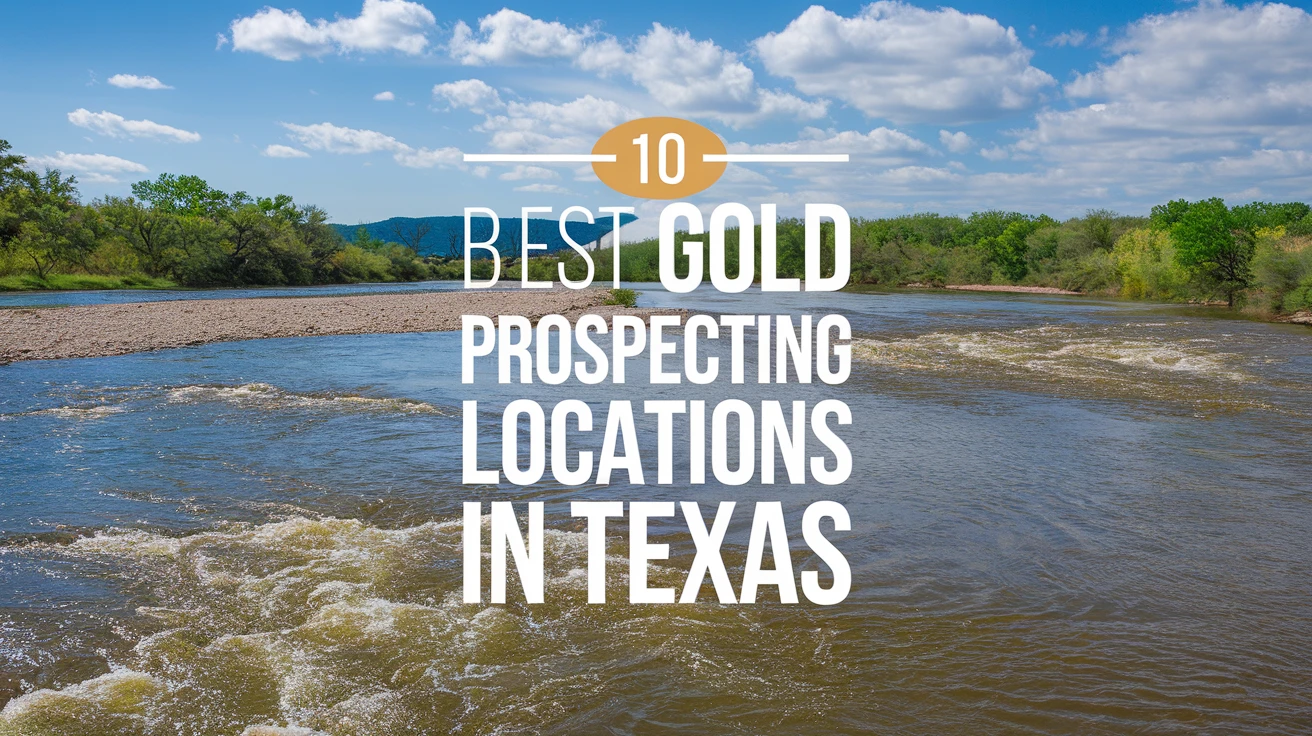
While Texas might be better known for its oil fields than its gold mines, the Lone Star State harbors some fascinating opportunities for gold prospecting enthusiasts. From the ancient streambeds of the Llano River to the historic mining districts near El Paso, Texas offers numerous locations where determined prospectors can try their luck at finding gold. Whether you’re a seasoned gold hunter or just beginning your prospecting journey, these ten locations offer some of the best opportunities to discover gold in Texas.
The Golden History of Texas Mining
Before we dive into specific locations, it’s essential to understand Texas’s rich mining history. While not as famous as the California Gold Rush, Texas has had its share of gold discoveries since the late 1800s. The state’s geological formation, particularly in the Llano Uplift region, created conditions favorable for gold deposits. Early Spanish explorers reported finding gold, and subsequent geological surveys have confirmed the presence of precious metals throughout various regions of Texas.
Historical Gold Production
| Time Period | Major Discoveries | Estimated Production |
|---|---|---|
| 1800-1850 | Spanish Expeditions | Minor findings |
| 1851-1900 | Heath Gold Mine | 500+ ounces |
| 1901-1950 | Llano County Operations | 1000+ ounces |
| 1951-Present | Recreational Prospecting | Varied amounts |
Top 10 Gold Prospecting Locations in Texas
1. Llano River
Located in central Texas, the Llano River is perhaps the most famous gold prospecting location in the state. The river’s geological history and natural processes have concentrated placer gold in its sediments. Best accessed through Llano County, prospectors can find small gold flakes and occasional nuggets in the river’s gravel bars.
2. Heath Gold Mine Area
Though the original mine is no longer operational, the surrounding area in Llano County still yields gold specimens. The location features both placer and lode gold deposits, making it an excellent spot for different prospecting techniques.
3. Colorado River
The Colorado River, particularly where it crosses the Llano Uplift, offers promising opportunities for gold prospecting. The river’s bends and gravel bars are prime locations for finding placer gold deposits.
4. Sandy Creek
A tributary of the Colorado River, Sandy Creek has historically produced gold finds. The creek bed contains black sand deposits, a common indicator of gold presence.
5. Honey Creek
Located in Mason County, Honey Creek has yielded both placer gold and valuable minerals. The creek’s accessible location makes it popular among weekend prospectors.
6. Pedernales River
The Pedernales River, flowing through the Hill Country, contains gold-bearing gravel bars. The best locations are often found near granite outcroppings.
7. Franklin Mountains
Near El Paso, the Franklin Mountains contain various mineral deposits, including gold. While mostly lode gold, some placer deposits can be found in the mountain streams.
8. Quitman Mountains
Located in Hudspeth County, the Quitman Mountains have a history of gold mining. Several abandoned mines in the area suggest the presence of gold-bearing deposits.
9. Presidio Mine Area
Though primarily known for silver, the Presidio Mine area has produced gold findings. The surrounding creeks and streams offer opportunities for recreational prospecting.
10. Van Horn Mountains
The Van Horn Mountains in West Texas contain various mineral deposits, including gold. The area’s remote location means less competition from other prospectors.
Essential Equipment for Texas Gold Prospecting
Basic Prospecting Kit
- Gold pan and classifier screens
- Sluice box for larger operations
- Metal detector with gold-finding capabilities
- Shovel and pick
- Collection vials
- GPS device
- First aid kit
Location-Specific Equipment
| Location Type | Recommended Equipment | Estimated Cost |
|---|---|---|
| River Prospecting | Sluice box, waders | $200-400 |
| Creek Panning | Gold pan, classifier | $50-100 |
| Dry Washing | Dry washer, metal detector | $500-1000 |
| Mountain Prospecting | Rock hammer, safety gear | $150-300 |
Legal Guidelines and Safety Considerations
Legal Requirements
- Obtain necessary permits and permissions
- Respect private property boundaries
- Follow state mining regulations
- Maintain required documentation
- Report significant findings to proper authorities
Safety Tips
– Always prospect with a partner
– Carry adequate water and supplies
– Check weather conditions before heading out
– Inform others of your location and planned return
– Wear appropriate protective gear
– Keep emergency contacts handy
– Maintain awareness of local wildlife
Conclusion
While Texas may not rival the famous gold fields of California or Alaska, it offers unique opportunities for both novice and experienced prospectors. The key to successful gold prospecting in Texas lies in thorough research, proper equipment, and patience. Whether you’re seeking a new hobby or dreaming of striking it rich, these ten locations provide excellent starting points for your Texas gold prospecting adventure. Remember to always follow legal guidelines, prioritize safety, and respect the environment during your prospecting activities.
Key Takeaways
- Texas offers diverse gold prospecting opportunities across various geological regions
- Proper equipment and preparation are essential for successful prospecting
- Legal compliance and safety should always be top priorities
Frequently Asked Questions
Do I need a permit to prospect for gold in Texas?
Yes, most locations require permits or landowner permission. Public lands may have specific requirements, while private lands need explicit owner consent.
What is the best time of year for gold prospecting in Texas?
Fall and spring offer the most comfortable temperatures. Winter can be good for some locations, but summer heat can be challenging and dangerous.
What type of gold can I expect to find in Texas?
Most gold found in Texas is placer gold in the form of small flakes and occasional small nuggets. Lode gold deposits exist but are less accessible.
How much can I expect to find as a beginner?
Beginners should set realistic expectations. Most finds will be small amounts of gold flakes, with larger discoveries being rare.
What equipment do I need to start prospecting?
Beginners should start with basic equipment like a gold pan, classifier, shovel, and safety gear. More specialized equipment can be added as skills develop.
Are there any gold prospecting clubs in Texas?
Yes, several prospecting clubs operate in Texas, offering guidance, group outings, and shared knowledge for members.
Can I sell the gold I find?
Yes, gold found through legal prospecting can be sold. Keep records of where and when you found it for legal purposes.
What are the most common mistakes beginners make?
Common mistakes include inadequate research, improper equipment use, and not obtaining necessary permissions before prospecting.
How deep should I dig when prospecting?
Most placer gold is found within the first few feet of surface material, often concentrated in bedrock cracks and crevices.
What geological indicators suggest the presence of gold?
Look for black sand, quartz veins, and areas where water flow has naturally concentrated heavy minerals.


